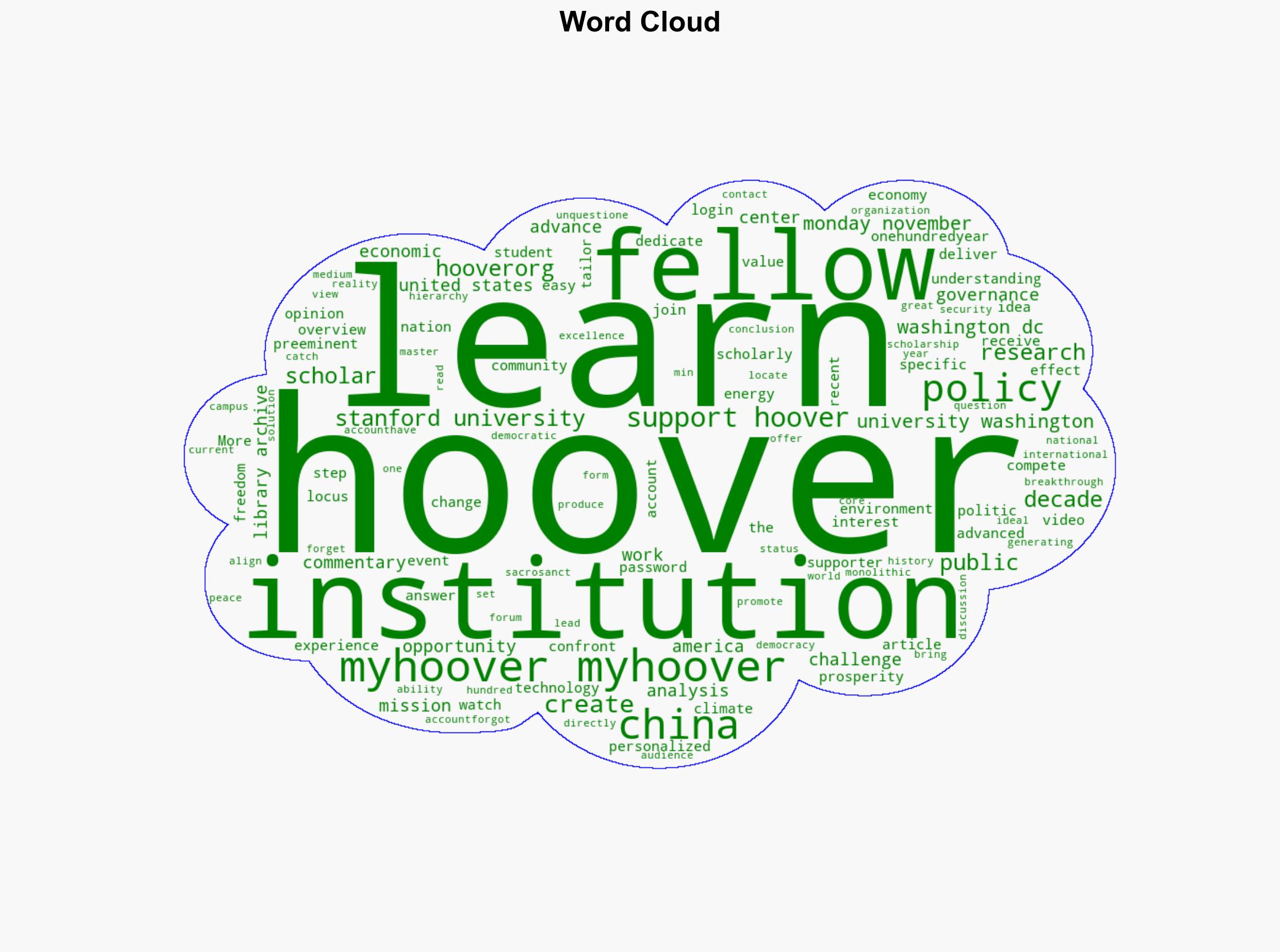Reality Caught Up To Climate Change – Hoover.org
Published on: 2025-11-18
AI-powered OSINT brief from verified open sources. Automated NLP signal extraction with human verification. See our Methodology and Why WorldWideWatchers.
Intelligence Report:
1. BLUF (Bottom Line Up Front)
The strategic judgment is that the Hoover Institution’s analysis on climate change reflects a shift in the perception of climate change as a critical issue intersecting with national security and economic competitiveness, particularly in relation to China. The most supported hypothesis is that advanced economies, including the United States, are increasingly viewing climate change as a strategic challenge that requires a competitive response to maintain economic and geopolitical influence. Confidence level: Moderate. Recommended action: Enhance collaborative international efforts to address climate change while simultaneously strengthening domestic policies to foster innovation and competitiveness in green technologies.
2. Competing Hypotheses
Hypothesis 1: The Hoover Institution’s focus on climate change signifies a strategic pivot towards integrating climate considerations into national security and economic policy frameworks, driven by the need to compete with China.
Hypothesis 2: The emphasis on climate change by the Hoover Institution is primarily an academic and policy-driven response to increasing public pressure and does not necessarily indicate a fundamental shift in strategic priorities.
Hypothesis 1 is more likely given the increasing geopolitical tensions with China and the recognition of climate change as a factor that can influence global economic and security dynamics.
3. Key Assumptions and Red Flags
Assumptions include the belief that climate change will continue to be a significant driver of policy change and that the U.S. will prioritize competitiveness with China. Red flags include potential bias in the Hoover Institution’s analysis due to its policy orientation and the possibility of underestimating the complexity of integrating climate change into broader strategic frameworks.
4. Implications and Strategic Risks
Cascading threats include potential economic disruptions from transitioning to green technologies and geopolitical tensions as countries compete for leadership in climate solutions. Escalation scenarios could involve cyber threats targeting critical infrastructure related to energy and environmental systems, as well as informational warfare aimed at undermining public trust in climate policies.
5. Recommendations and Outlook
- Enhance international cooperation on climate initiatives to mitigate risks and foster innovation.
- Invest in research and development of green technologies to maintain economic competitiveness.
- Best scenario: Successful integration of climate policies enhances economic growth and geopolitical stability.
- Worst scenario: Failure to address climate challenges leads to economic decline and increased geopolitical tensions.
- Most-likely scenario: Gradual policy shifts towards integrating climate considerations into national security and economic strategies, with mixed outcomes.
6. Key Individuals and Entities
Hoover Institution, Stanford University, China (as a geopolitical competitor).
7. Thematic Tags
National Security Threats, Climate Change, Economic Competitiveness, Geopolitical Strategy
Structured Analytic Techniques Applied
- Cognitive Bias Stress Test: Expose and correct potential biases in assessments through red-teaming and structured challenge.
- Bayesian Scenario Modeling: Use probabilistic forecasting for conflict trajectories or escalation likelihood.
- Network Influence Mapping: Map relationships between state and non-state actors for impact estimation.
Explore more:
National Security Threats Briefs ·
Daily Summary ·
Support us
·





